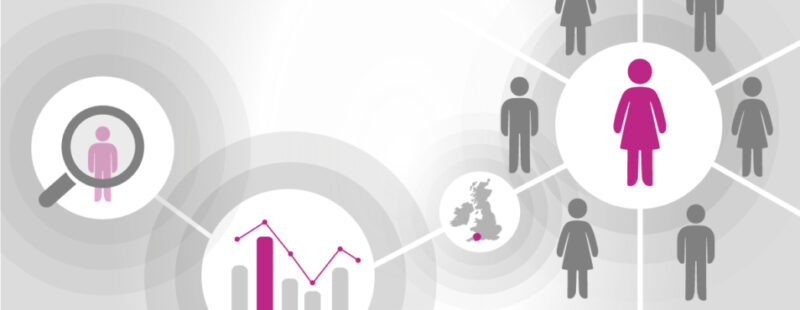We recently held a series of events as part of our Research and Policy Forum to explore the evaluation and measurement of loneliness. You can read more about our work on loneliness measurement and access watch these events via our Evaluation and Measurement page.
In anticipation of these events, Professor Simon Hunter from Glasgow Caledonian University, examined the challenges facing the measurement of loneliness in this blog.
Accurately and meaningfully assess loneliness
Given recent Government-led strategies to tackle and reduce loneliness, it is critical that researchers, policy-makers, charities, and anyone seeking to implement and evaluate intervention / prevention strategies can accurately and meaningfully assess loneliness. While this sounds obvious, it is less clear that measures which exist today, particularly with reference to children and young people (CYP), are fit for purpose.
Below, I briefly outline three ways in which measurement is currently in need of attention.
Assessing chronic and transient loneliness
In a recent evidence review led by Prof Pamela Qualter, for the UK’s Department for Digital, Culture, Media and Sport, understanding the relationship between transient loneliness and chronic loneliness (and how each of those contribute toward wellbeing) was highlighted as an important priority. However, most (all?) measures of loneliness have difficulty distinguishing between these two experiences. For example, one of the most commonly used measures (the UCLA scale, a three-item version of which is employed by the ONS) only records frequency and not duration. This means that the transience / chronicity of loneliness cannot be ascertained in any other way than via, for example, high scores that are recorded as high over a number of occasions. This in itself leaves to one side how we even define a ‘high score’ (there appears to be no established cut-off, at least not for the UCLA).
A further difficulty in identifying transient and chronic loneliness using existing scales is that they usually do not specify a time period for respondents to consider when answering the survey. For example, of the three scales described in the recent Campaign to End Loneliness measurement review, none specify a time period. This, I think, pushes the responses toward being indicators of personality (i.e., “I’m the kind of person who…”) rather than indicators of experiences which can wax and wane (i.e., “Over the last week, I’ve felt…”). While this may seem like a niche measurement point, it is fundamental when assessing change over time (i.e. the success of intervention / prevention efforts) since a personality trait is, by definition, an enduring and internal aspect of ourselves that is likely to be hard to change. This also speaks to the issue of the stigma attached to loneliness – people may be more open to reporting specific, recent feelings or experiences than they may to reporting that they are “the kind of person” who is lonely.
Distinguishing between ‘how we see ourselves’ and ‘how we want to be’
A fundamental element of loneliness is the degree to which there is a discrepancy between what we want from social relationships and what we believe we currently have. Again, measurement lags behind conceptualisation here. The UCLA scale items (like other measures) do not directly interrogate this discrepancy; some may imply it (e.g. “How often do you feel that you lack companionship?”) but items are worded ambiguously enough that they may be taken as “Is there a discrepancy between what you have and what you want” or could be taken as “Do you have relatively few companions” and the respondent’s un / happiness with that situation is not questioned. Furthermore, the degree of discrepancy between perceived and desired relationships is completely ignored since only frequency is assessed. The Campaign to End Loneliness Measurement Tool, in contrast, does emphasise this discrepancy but cannot allow us to begin to interrogate transience / chronicity for the same reasons as outlined in my first point above.
Making measurement meaningful for children and young people
Research increasingly recognises the importance of the involvement of ‘end users’ during the research process in order to make that research meaningful and impactful for those same users. This is particularly germane to CYP and to issues relating to their mental health because they are frequently dismissed, ignored, or infantilised when research is carried out that is relevant to them. This risks work being carried out, with the best of intentions, where ‘end users’ (CYP) do not accept outcomes as meaningful or relevant to their lives. Measurement development should therefore seek to involve CYP from the outset, and should seek both their views and their involvement in the c0-design and co-production of measures. Some work on loneliness among CYP has involved young people (e.g. Houghton et al.’s Perth A-Loneness Scale) and future work should seek to extend this approach when addressing some of the measurement issues outlined above.
These are just some of the issues that I think need to be considered in debates concerning the development of future measures of loneliness. There are others that I have not touched on (e.g. multidimensional characteristics of loneliness, hypervigilence toward threat, appropriate time periods for recall, the application of adult models to CYP) but I would love to hear the views of others on these issues.





No comments on this article yet. Please feel free to submit a comment below.
By submitting a comment you grant Campaign to End Loneliness a perpetual license to reproduce your words and name/web site in attribution. Inappropriate and irrelevant comments will be removed at an admin's discretion. Your email is used for verification purposes only, it will never be shared.